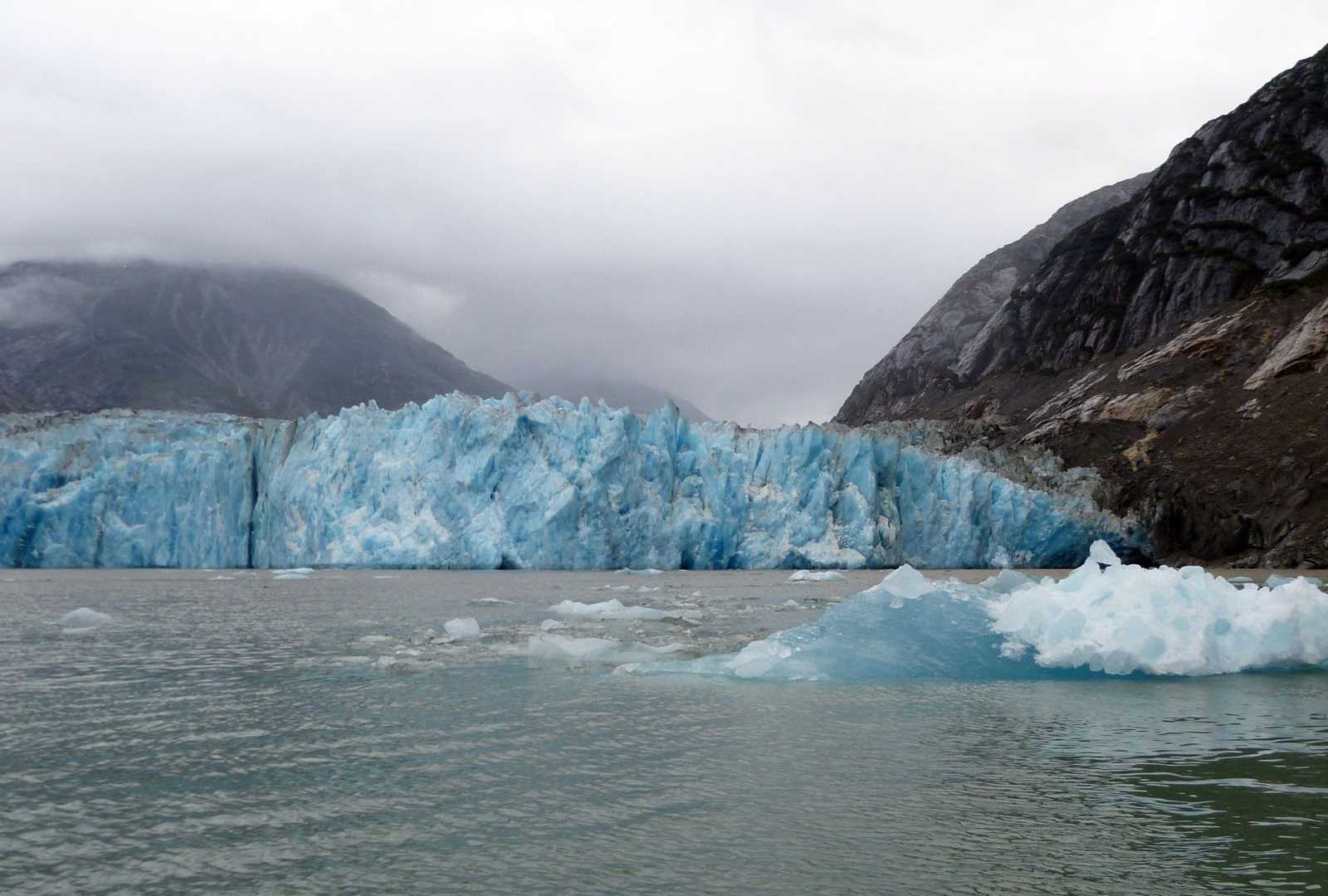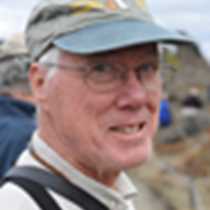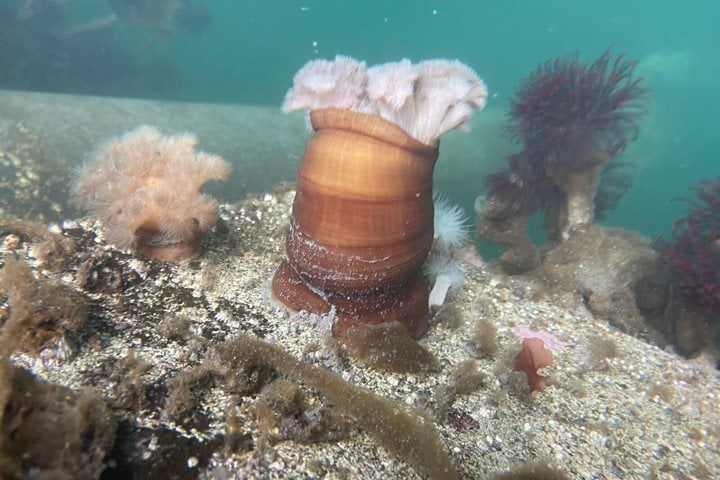Imagine, if you will, Southeast Alaska as it was some 12,000 years ago (a mere blink of the eye in geological time.) The continental glaciers had retreated from most of the northern part of North America, but they lingered a bit longer in Southeastern Alaska. Virtually all of the land was under ice that formed in the mountains and flowed downhill as glaciers. As it moved, the ice carved the landscape, leaving behind U-shaped valleys. When the continental ice melted and glaciers retreated into the mountains, sea level rose and the deeper valleys were flooded to become fjords, the channels through which we travel on our excursion around Southeast Alaska. Endicott Arm is one such passage. It cuts into the mainland of Alaska, reaching almost to the border with Canada. We passed myriad waterfalls descending down the steep granite walls of the fjord. Icebergs floated past. Many of them were a brilliant blue, the ice reflecting the blue end of the light spectrum. At the head of the fjord, we found their source: the Dawes Glacier. It was raining at sea level, but in the mountains above us, it may well have been snowing, to be transformed into more ice that will fuel the relentless downhill motion of the ice.
We boarded our expedition landing crafts for cruises to the glacier face. Harbor seals and harbor porpoises swam in the silt-laden water, and gulls soaring in front of the glacier face gave an indication of its impressive height. The National Geographic Sea Lion then motored back down Endicott Arm and turned toward the south in Stephens Passage. We were watching for humpback whales, and find them, we did. There were whales all around us, busily feeding. In fact, these humpbacks must do most of their annual feeding during their summer sojourn in Alaska. As winter arrives, most of the whales depart and swim straight south to the waters around Hawaii. Their task in Alaska is to lay down the deposits of blubber needed for the long journey and the breeding activities that take place in the less productive tropical ocean. The whales were scattered about, singly and in cow-calf pairs, seemingly oblivious to our presence. Each whale rose to the surface for a series of six or so breathes to restore the oxygen in their blood and tissues. Then, raising their huge flukes into the air, they descended into the depths in search of their prey. In this part of Alaska, the whales feed on krill; elsewhere they feed on small schooling fish like herring. As evening approaches, the krill migrate toward the surface where they feed on the phytoplankton productivity of the day. When we returned to the deck after dinner as night was overtaking us, we found that the feeding behavior of the whales had changed. Now they were lunging through the surface water, their huge mouths agape, engulfing tons of water with each gulp. They then filtered the water through their baleen plates to capture the krill. Ah, to know just how much krill was captured with each lunge as they repeated the behavior, over and over, in the fading light of Southeast Alaska. And we were there to watch it!







